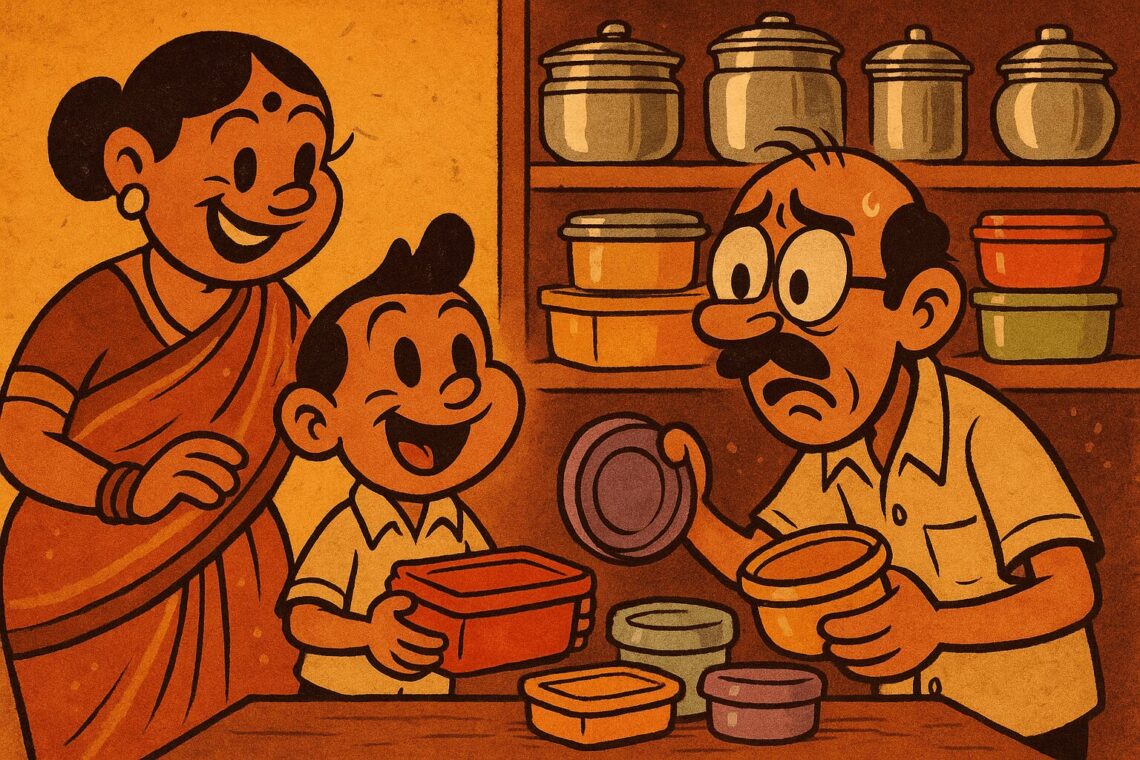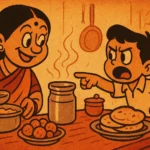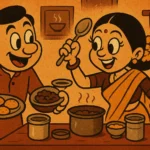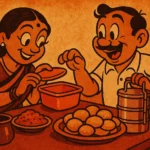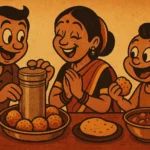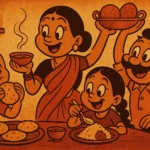There was a time when our kitchen shelves gleamed with steel. Rows of dabbas—round, sturdy, stackable. You could drop them, kick them, even use them as impromptu stools during power cuts. And then, somewhere in the late ’90s, a quiet, pastel-colored revolution began. Our steel dabbas started vanishing, replaced by squat rectangles and translucent rounds that clicked shut with suspicious cheeriness. Enter: Tupperware.
My mother made the switch in phases, like someone cautiously adjusting to a new religion. One day, the leftover rajma was in an orange-lidded container that sealed with a satisfying “burp.” A week later, all the lentils in the pantry had migrated to neatly labeled plastic tubs. Within a month, our school tiffins were less clang and more click. The stainless steel generation had just turned a corner into polypropylene modernity.
The Global Box Arrives
This wasn’t just about storage. This was aspiration in airtight form. Tupperware didn’t just arrive in shops—it arrived in drawing rooms, via demonstrations hosted by distant aunties in cotton saris with flip charts and deep conviction. These weren’t sales pitches; they were TED Talks of the suburban 90s. “See how this seals?” “See how your khichdi won’t leak?” “Now microwave safe!”
It was the dawn of a new kind of homemaking—efficient, color-coded, and ever so slightly westernized. You weren’t just buying boxes. You were buying into a world where leftovers had dignity, and where reheating didn’t mean scraping burnt sabzi off a battered steel plate.
The Quiet Rebellion Against Steel
Let’s be honest: steel was loyal, but it didn’t flex. It didn’t stack neatly in refrigerators. It wasn’t transparent. It didn’t fit snugly into a shoulder bag. And worst of all—it couldn’t be microwaved. In the pre-microwave era, that wasn’t a problem. But once that clunky IFB machine took its place on the countertop, steel started to look like yesterday’s technology.
Plastic, on the other hand, adapted. It came with snap-on lids, tabbed edges, and more colors than Holi. Pink for pickles. Green for chopped onions. Blue for that nameless red curry that always stained the base. Even the stains became badges of regular use—bright orange turmeric halos that told their own stories.
Emotional Tupperware
We didn’t just store food in these boxes. We sent love in them. “Give this box to Aunty next door.” “Take these modaks to your office.” “Your cousin is coming from Nashik? Send her back with pickle in the big one.” Somewhere along the way, these plastic containers became the vessels of inter-family logistics. Half the time, we had no idea where our original lids went. But the boxes returned—sometimes with chakli, sometimes with coconut barfi, always with affection.
My mother had a drawer dedicated to lids. It looked like a chaotic rainbow, with nothing matching and everything somehow working. Finding the right lid for the right box was like playing a memory game you never won, but still played every day. And the moment a lid cracked? Mourning. Immediate, loud, and often followed by the question, “This was the one I got in the gift set, right?”
Plastic, Class, and Progress
Tupperware (and its hundreds of cousins) didn’t just reshape kitchens—they mirrored a social shift. Steel was practical. Plastic was aspirational. Owning a complete Tupperware set meant you’d “arrived.” There was even hierarchy. The imported, pastel-toned Tupperware had class. The local, flimsier knock-offs from Dadar market were seen as the eager but underqualified cousins.
This wasn’t just about kitchen storage. It was about stepping into a globalized India. The same way we moved from Landlines to Nokia phones, from Doordarshan to cable, we moved from dabbas to click-locks. And every time we brought out that maroon container with matching lid for guests, we weren’t just offering sev puri. We were showing we knew what good design and tight seals looked like.
Today, a Drawer of Ghosts
Now in Austin, my own kitchen has a drawer full of plastic containers. Some with markings faded from too many dishwash cycles. Some warped from microwave adventures gone wrong. A few still carry turmeric memories from my mother’s cooking. I also have steel containers—mostly nostalgia pieces I never use. Too loud. Too cold. Too solid. But I can’t let them go.
Because somewhere in that shift—from clang to click, from metal to plastic—we left behind more than just a material. We moved faster. Ate faster. Packed food for later, instead of sitting down to eat together now. And yet, every time I open a tupperware box that smells faintly of leftover methi thepla, I feel a little time loop. A little Mumbai, in a little box.
The Plastic Box Will Outlive Us All
Say what you want about the environment or biodegradability—these boxes are immortal. That box your mom packed chole in during 1999? It’s still in the cupboard. That one your aunt sent mango pulp in? It’s hosting rubber bands now. The plastic may fade. The labels may peel. But the memories sealed inside? Still fresh. Still microwaveable. Still there.
Born in Mumbai, now stir-frying feelings in Texas. Writes about food, memory, and the messy magic in between — mostly to stay hungry, sometimes just to stay sane.

